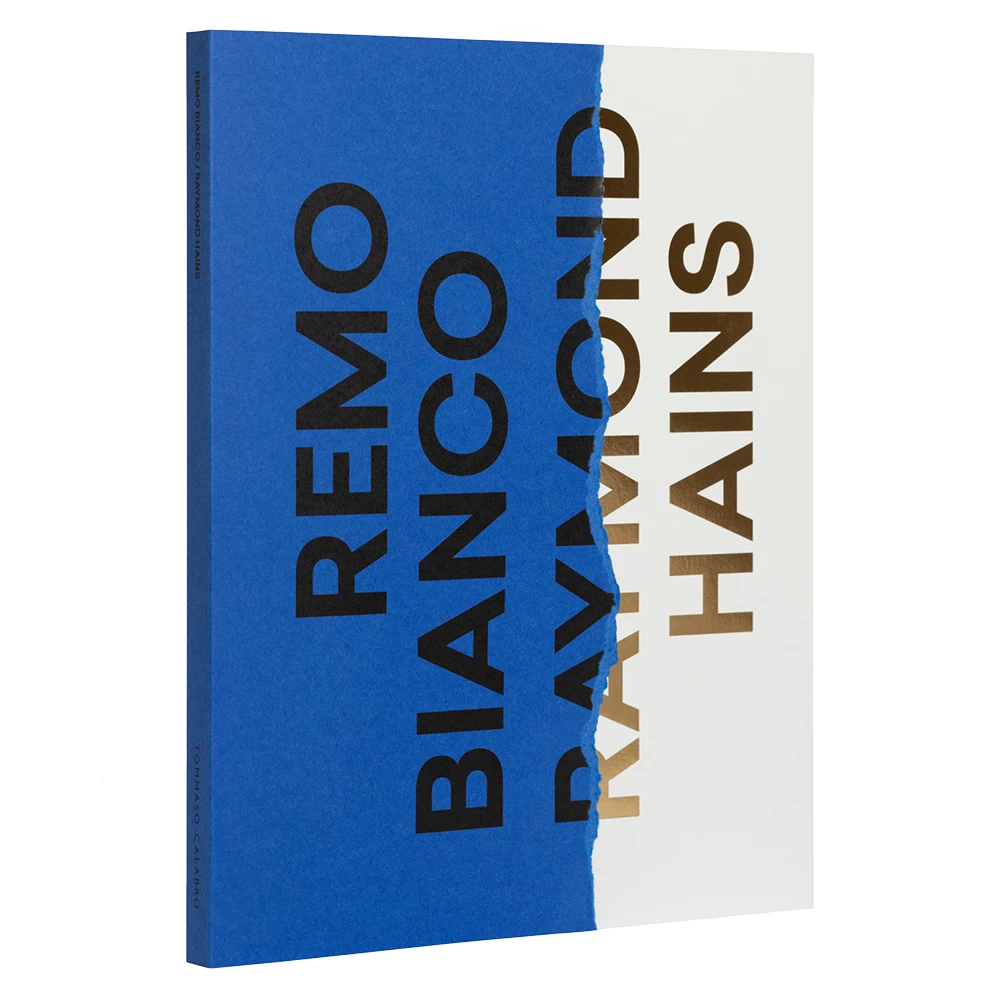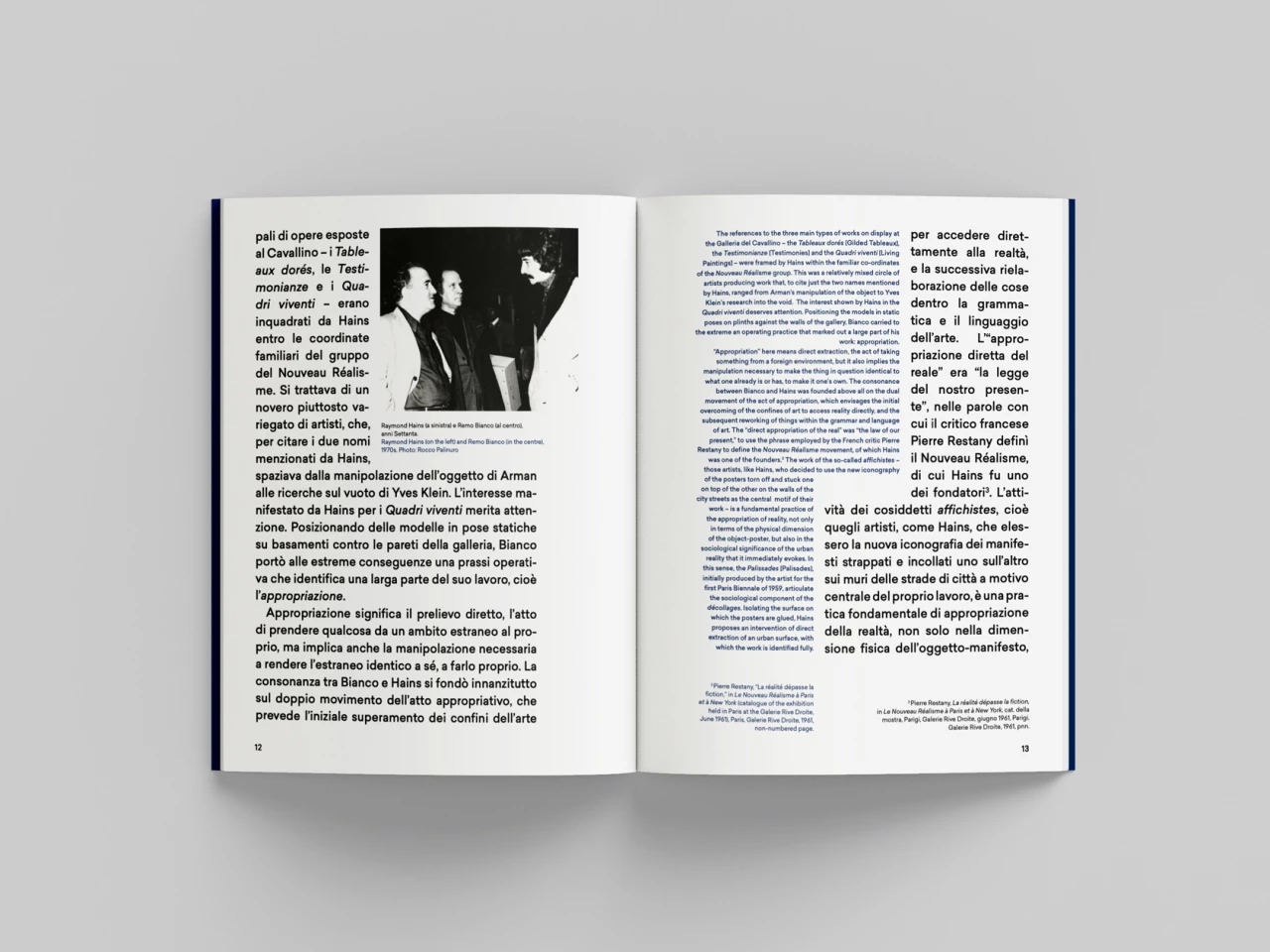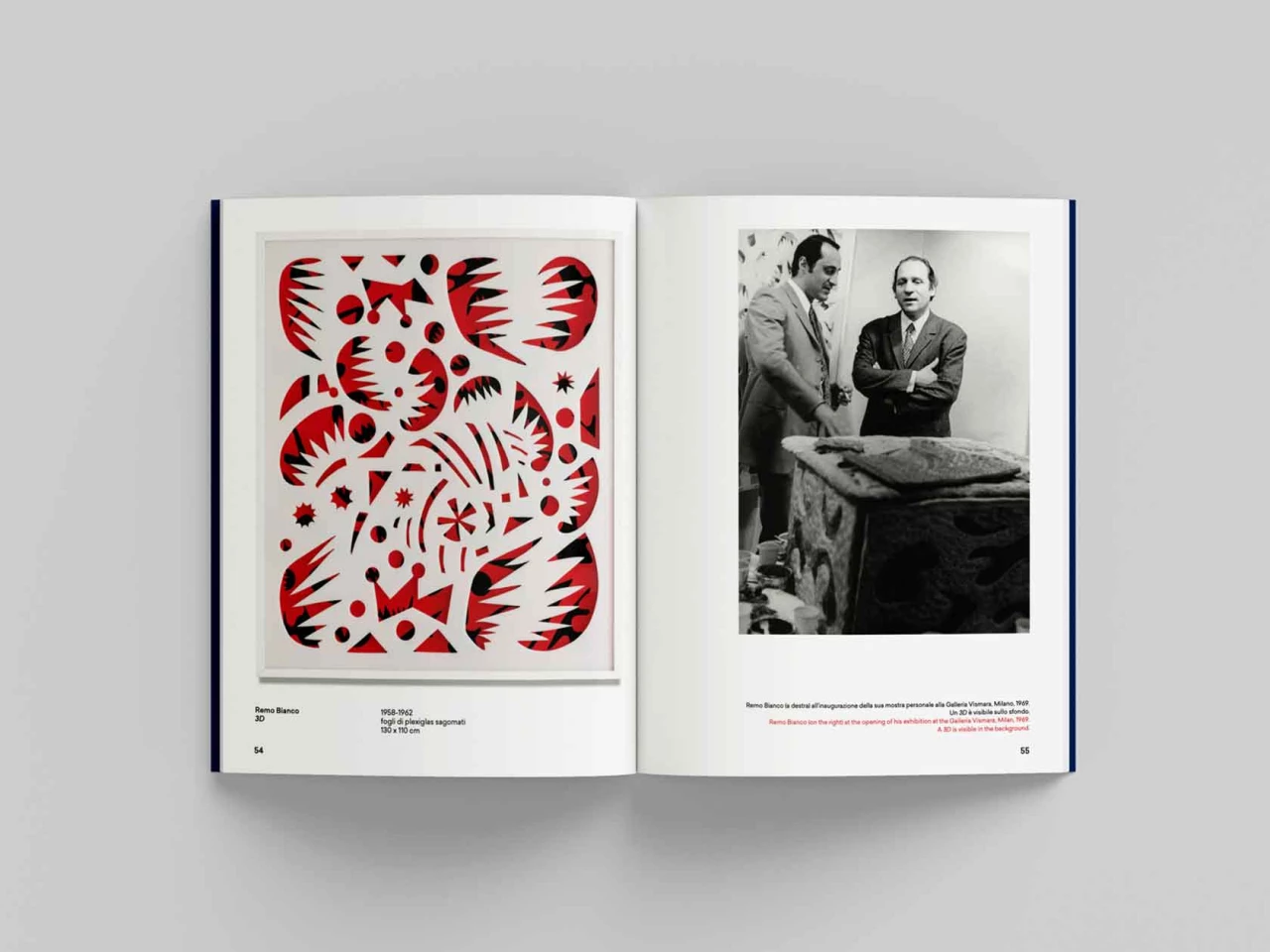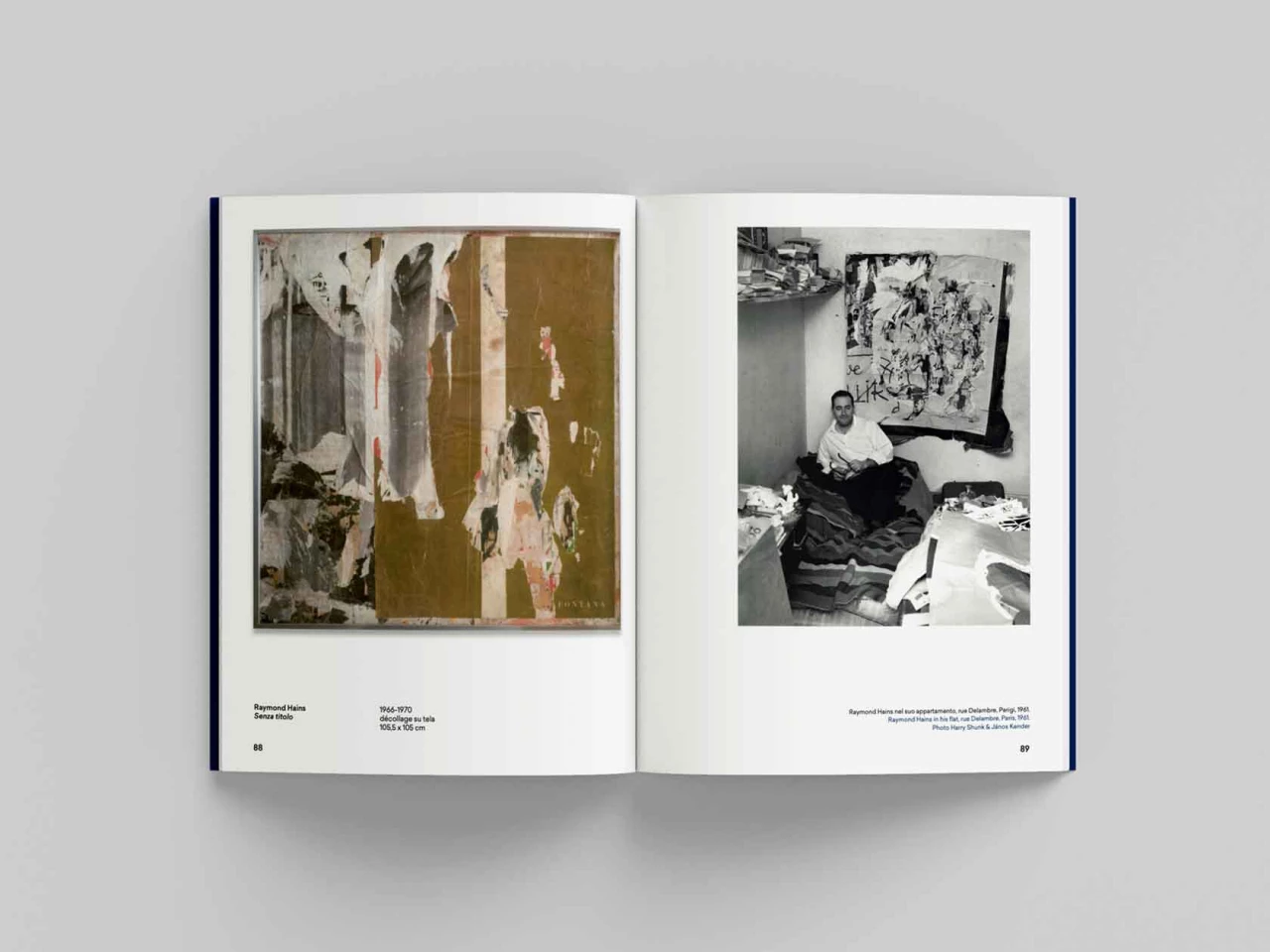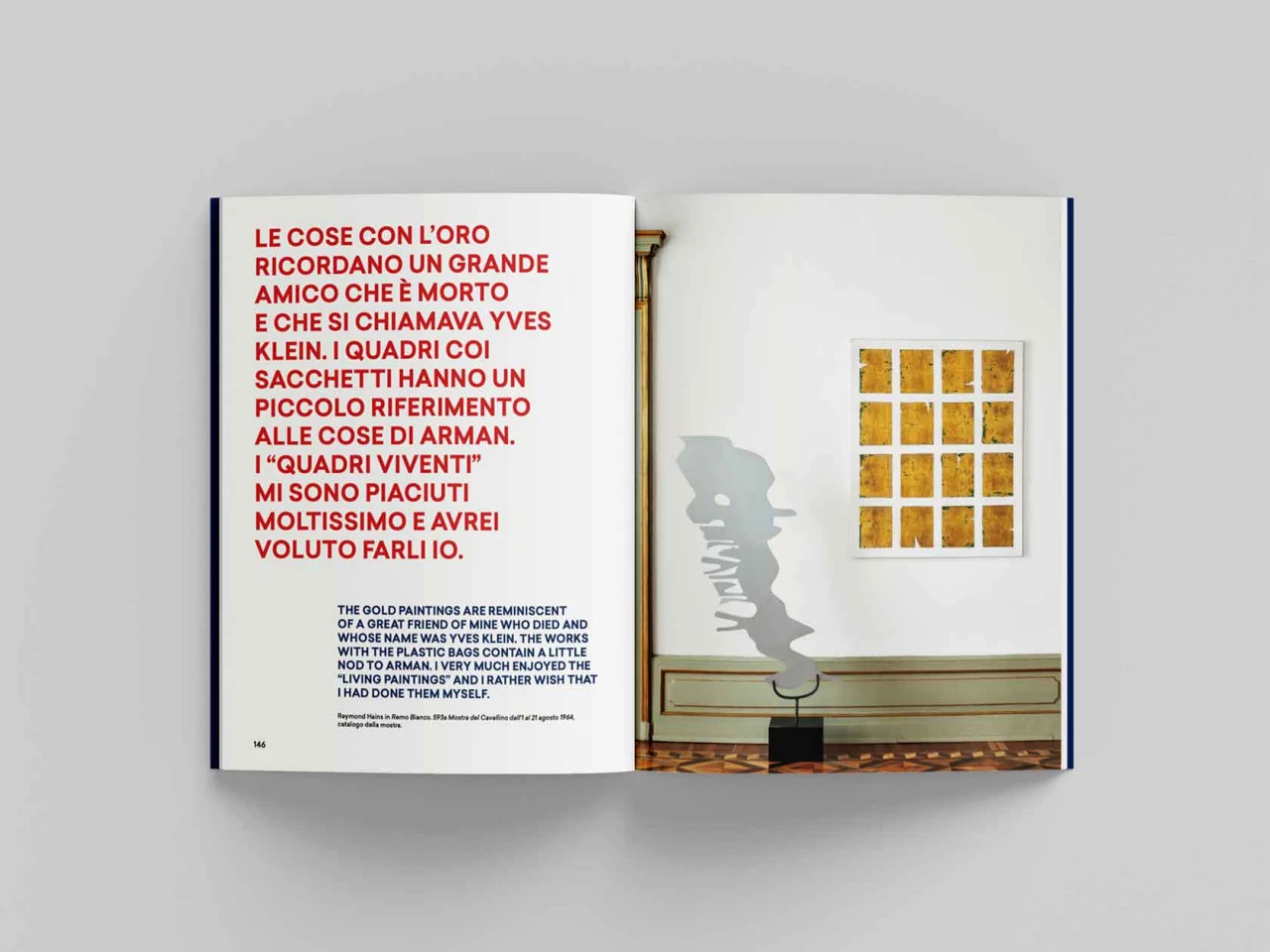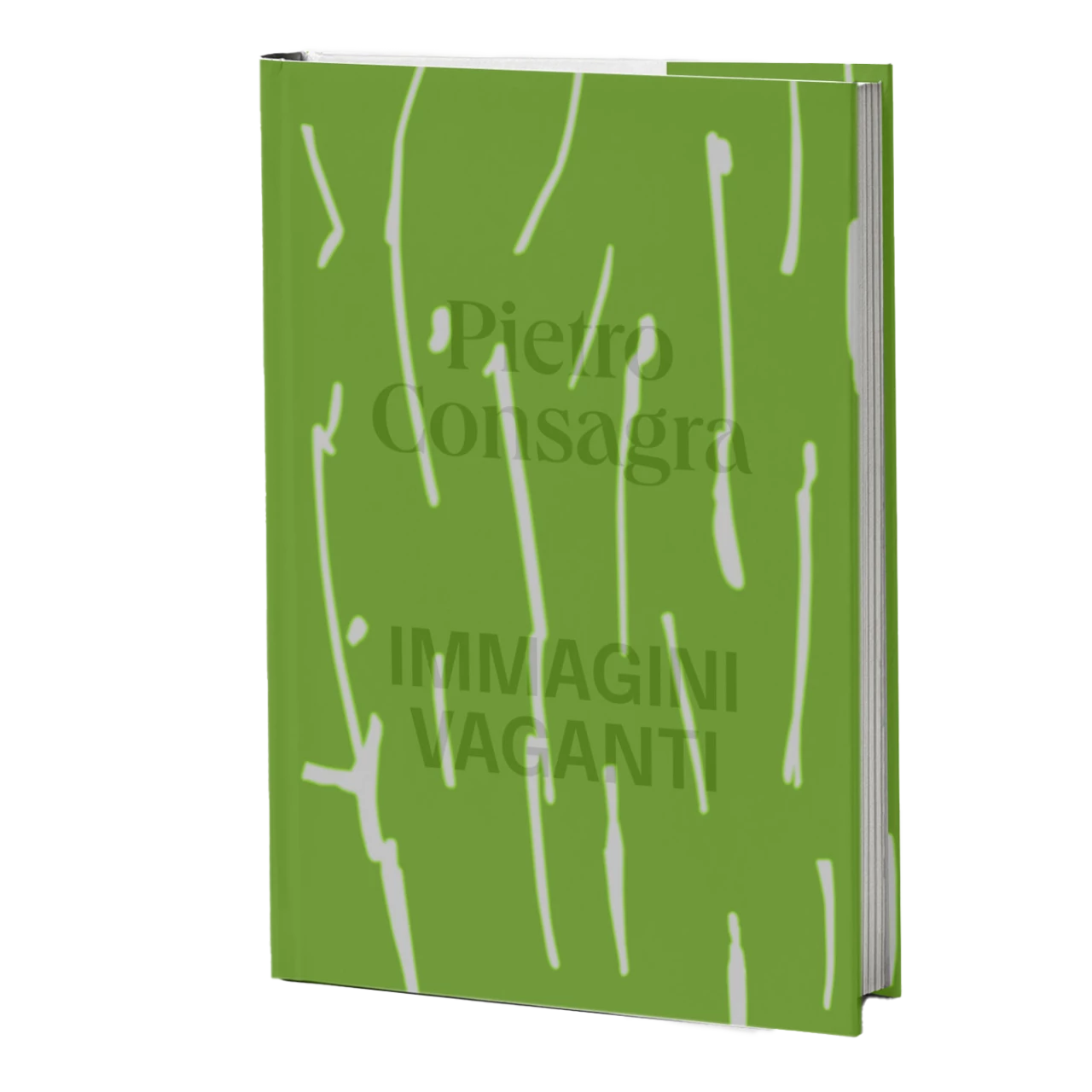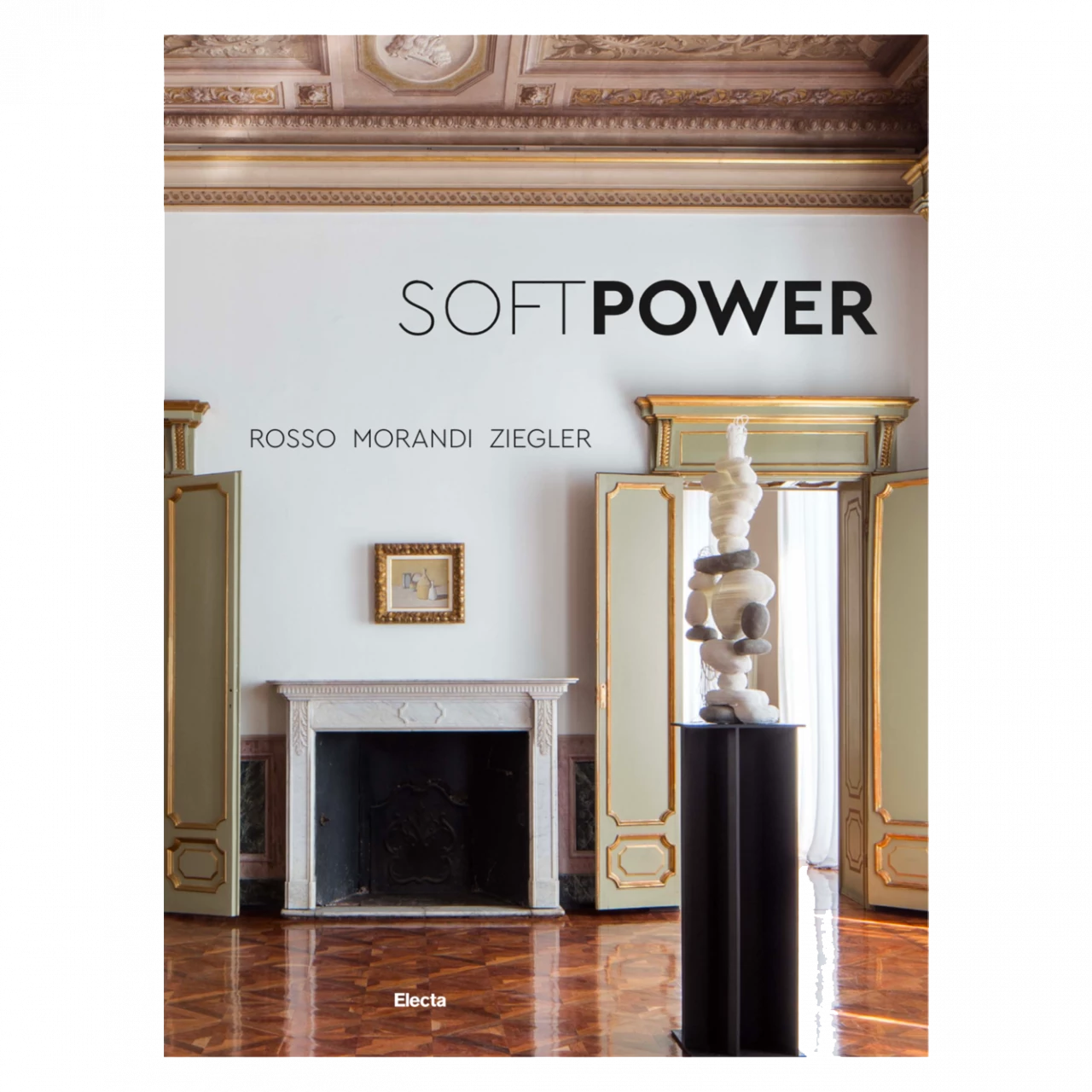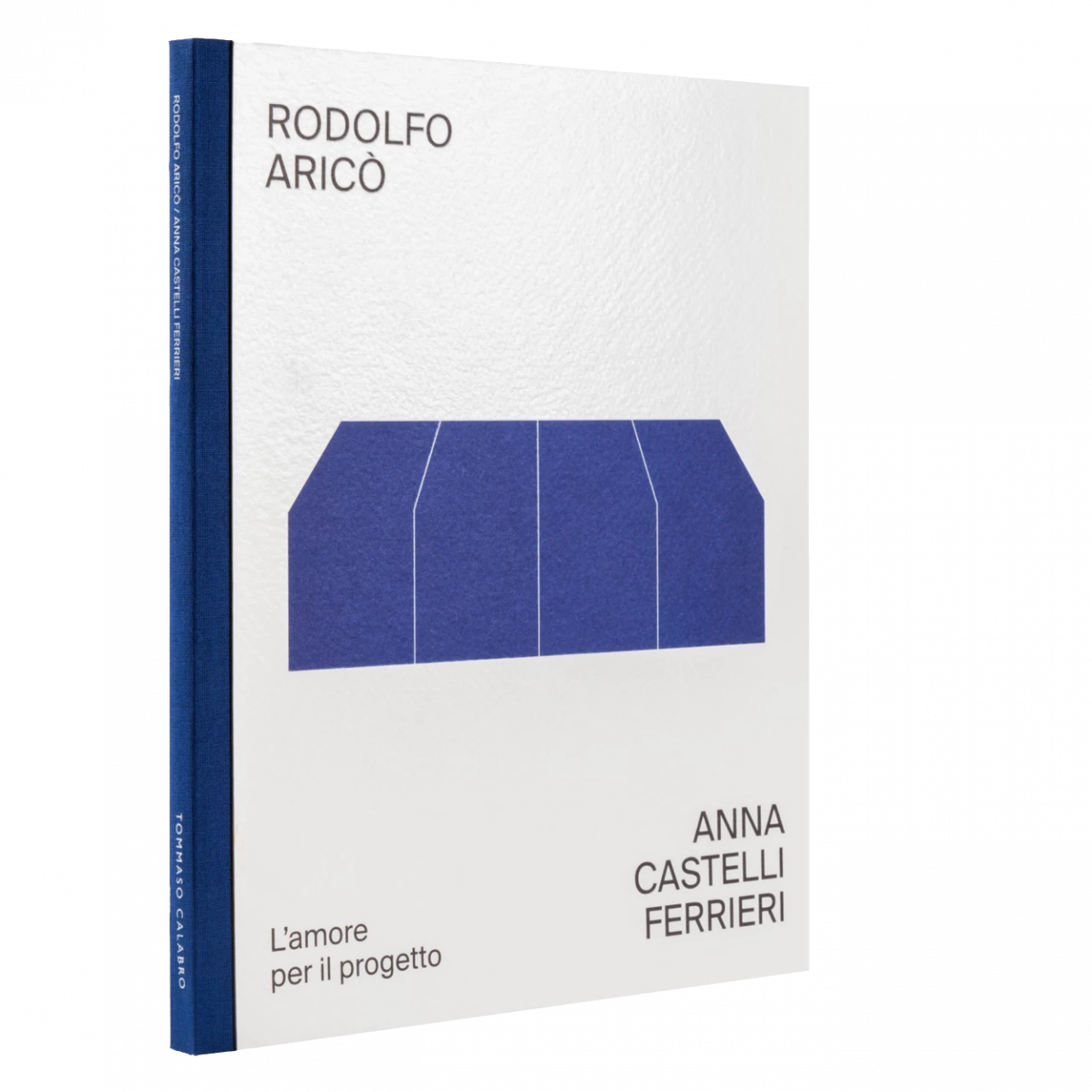This volume was published to accompany the exhibition Remo Bianco / Raymond Hains, on view at the Galleria Tommaso Calabro from December 14, 2021, to February 26, 2022. The show presented a dialoguebetween two protagonists of Post-war art, in between Milan, Paris and Venice: Remo Bianco (1922–1988) and Raymond Hains (1926–2005).
Raymond Hains was one of the most influential French artists of the second half of the twentieth century, a founding member of the Nouveau Réalisme, who became famous for his pioneering torn posters (the so-called décollages and affiches lacerées). Celebrated while he was alive in the most important French museums and at the Venice Biennale, Hains captivated the art world with his linguistic somersaults and flights of fancy, connecting unexpected places, situations and images through his depth of learning and sharp sense of irony. The Milanese Remo Bianco was an innovative yet somehow misunderstood artist, rediscovered only recently thanks to the major retrospective staged at Milan’s Museo del Novecento in 2019. Better-known for his Tableaux dorés, Bianco was one of the first artists in Italy to experiment with innovative materials (from Plexiglas and artificial snow to rubber and found objects), to engage in performance art, and to bring reality into art.
In the exhibition Remo Bianco / Raymond Hains, selected works from the artists’ most representative series were presented side by side for the first time, paying homage to Bianco and Hains’ life-long friendship that started in the early 1960s. This fully illustrated catalogue retraces this friendship through photographs and archival material published on this occasion for the first time. An essay by Francesco Guzzetti sheds light on how appropriation of the real was a distinctive, mutual practice in both Bianco’s and Hains’ oeuvre, and a founding element of their tireless research.
INDEX
Introduction
— Tommaso Calabro
The Appropriations of Remo Bianco and Raymond Hains
— Francesco Guzzetti
Catalogue
Biographies
The Exhibition
